A Private Tour today, up in NW Norfolk. It was rather grey and cloudy in the morning, but we had some unexpected bright and sunny weather in the afternoon, although a light NE wind meant it was still a little fresh on the coast.
With a bit of cloud cover this morning, we figured that there wouldn’t be too much heat haze first thing, so we headed up to Ringstead to try to see the Dotterel. As we got out of the minibus, a Lesser Whitethroat was singing in the hedge and it flew across and landed on the outside edge of a hawthorn so we could get a good look at it.
As we walked down the track, a female Wheatear flicked up ahead of us into an oak tree. It dropped down again into the neighbouring field and was joined by a bright male. A smart male Yellowhammer sang from the blackthorn ahead of us and several Common Whitethroats song flighted up out of the verges as we walked along. A Grey Partridge was standing proud in some spring barley, with a couple of Red-legged Partridges nearby for comparison.
One of the locals was already watching the Dotterel and when we walked over and asked where they were, he pointed right in front of us! Not what we were expecting, they are often very distant, but they had apparently just flown in from the back of the field and landed quite close to the track. Even better, they then proceeded to come closer still, climbing in and out of the furrows straight towards us.

Over the course of the next half an hour or so, we were treated to some amazing close views of the Dotterel. There are six of them now, three brighter females and three duller males. They turned and made their way down the field parallel with the track, so we followed. They were moving very quickly, running over the field and then stopping for a few seconds before running on. Eventually they cut further back into the field and we could actually get the scopes on them – they were too close before!
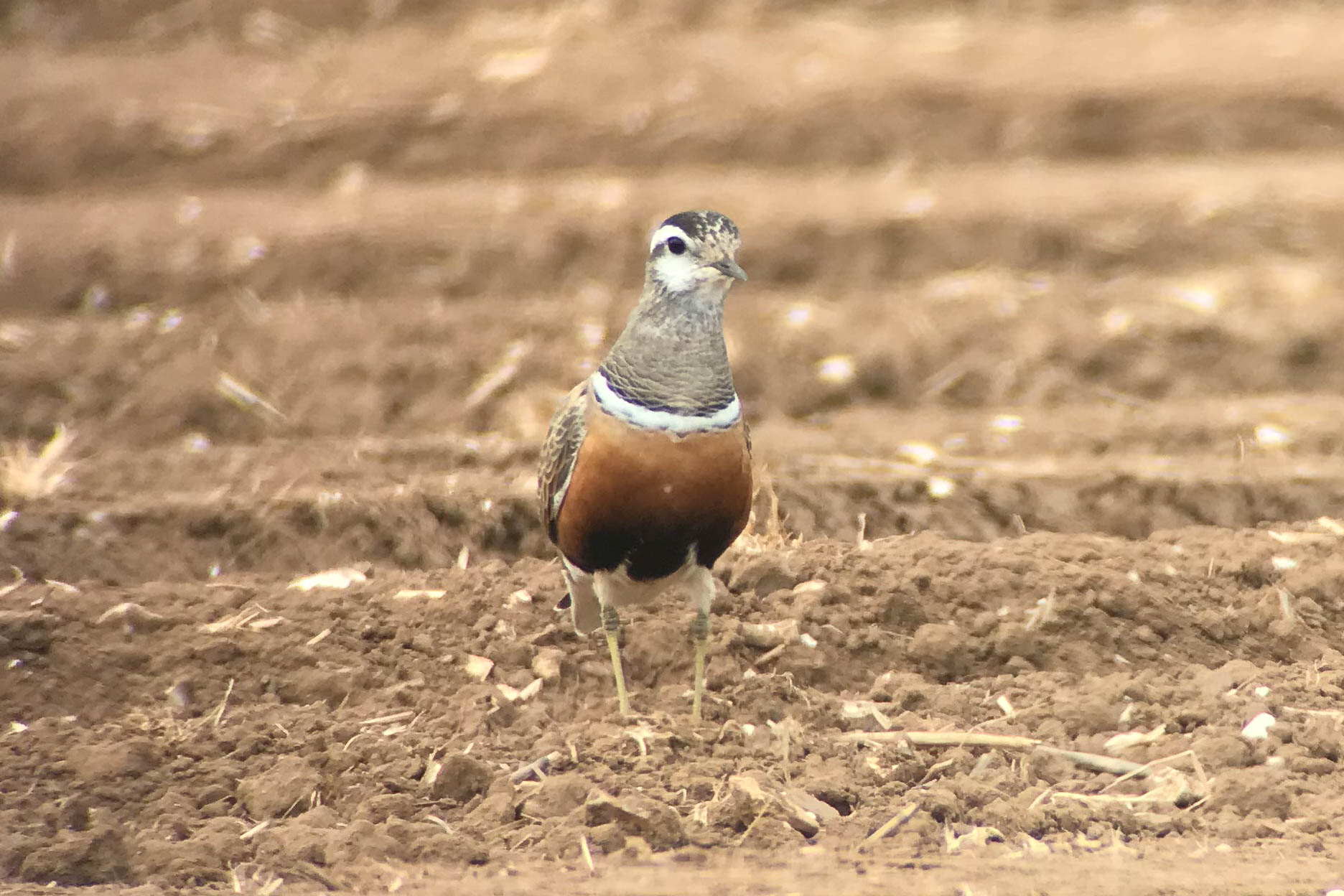
We had already enjoyed great views and were about to pack up when the Dotterel started running straight towards us again, so we stopped and watched a bit longer. They were probably trying to get back to the field they had been in about ten days ago, because suddenly they took off and flew low across the track behind us, landing further out in the crop the other side. We did move on now.
Our next destination for the morning was Snettisham. As we made our way through the gate into the Coastal Park, a Cuckoo was singing from the wires. We got it in the scope and had a good look, before it dropped down and we lost sight of it.
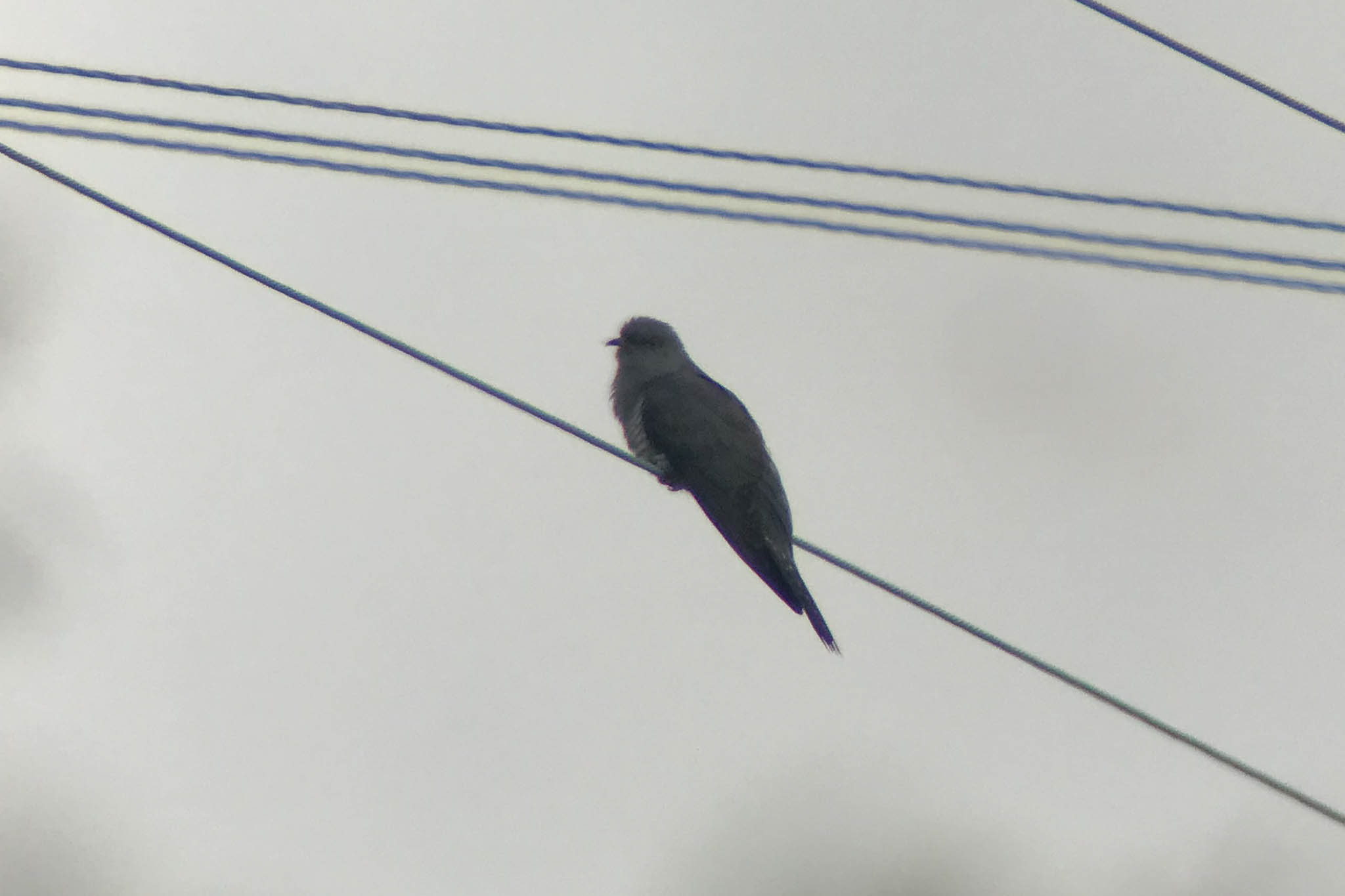
A little further in, a Lesser Whitethroat was rattling in the bushes and showed well again briefly. There were several Common Whitethroats song flighting, Blackcaps and Chiffchaffs singing. The first of many Sedge Warblers perched up nicely on the top of a bramble and a Cetti’s Warbler shouted at us from deep in the reeds.
It was rather grey and cool and there were quite a few hirundines hawking for insects overhead and out over the marshes beyond, mostly Swallows and a few House Martins with them. A Common Swift appeared with them briefly, our first of the year. They have been very slow arriving this year, presumably due to the cool north and east winds we have been enjoying, so this was a nice bonus.
We climbed up onto the seawall for a look at the Wash. The tide was going out but had not cleared the beach yet, and just a small huddle of Turnstones and a single Ringed Plover were roosting on the shingle. Continuing on up through the bushes, there were lots more warblers singing, plenty of Linnets, and at least three pairs of Stonechats. As well as the numerous Sedge Warblers, we heard a couple of Reed Warblers too, and had a couple of glimpses as one was chased through the reeds by a Sedge Warbler.

When we got up to the crossbank, we had another look out at the Wash. There was a nice wide strip of exposed mud now and the waders were coming back to feed. There was a nice flock of Bar-tailed Godwits out on the mud, several in smart breeding plumage, bright rusty all the way from head to undertail. In amongst them were five Knot, one just starting to get some orange below.
Two people came along the beach walking six dogs. One was clearly much more lively than the others and running around off the lead. After they had all gone past, it slipped back round behind its walkers and once out of sight ran out across the mud and flushed all the waders. The birds landed a short distance out in the shallow water and the dog lost interest. But once again it just shows how these birds struggle with constant disturbance now.
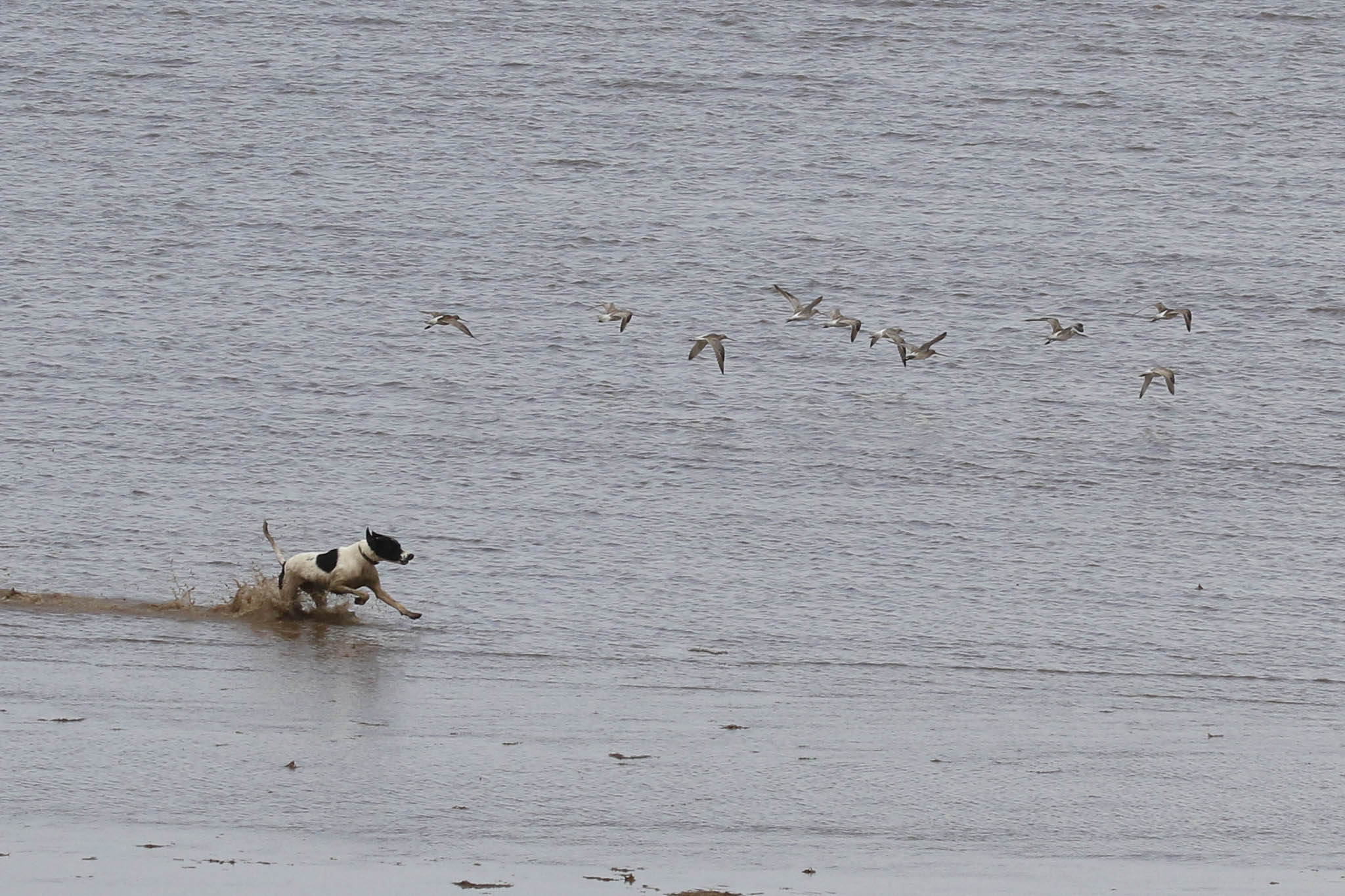
We cut across to the inner seawall and looked out over Ken Hill Marshes. There was a huge flock of Oystercatchers roosting on one of the scrapes and while we stood and watched they started to filter back out to the Wash in lines. There were three more Bar-tailed Godwits here too, including two more looking stunning in their rusty breeding plumage.
What was possibly the same Cuckoo we had seen earlier was now singing from somewhere in the trees at the back of the marshes. A Yellow Wagtail called and flew low overhead, disappearing off south without stopping.
We made our way back along the inner seawall, stopping from time to time to scan the marshes. The first Turtle Dove of the year here had been reported yesterday, but we hadn’t seen or heard anything on our walk. We were almost back to the road, when we looked across and saw a Turtle Dove perched on the wires. We got it in the scope for a closer look. Then it stretched and dropped off into the bushes below. Perfect timing!
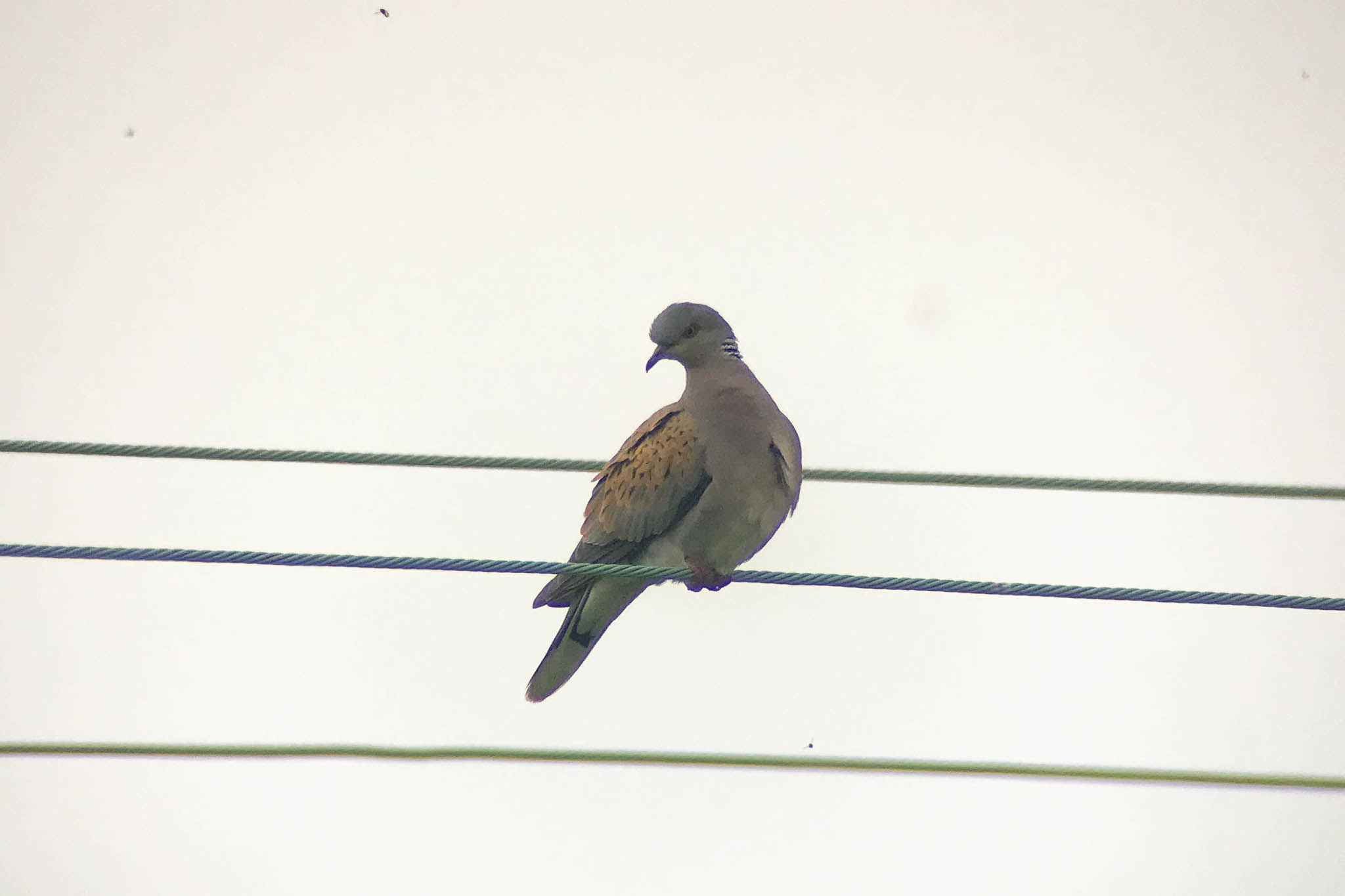
It was time for lunch now, so we made our way round to Titchwell. The sun was out and we sat in the picnic area eating and watching the damselflies basking on the bushes. After lunch, we headed out for a quick look on the reserve.
We hadn’t heard any Grasshopper Warblers this morning (they mostly sing very early in the morning now), so we asked in the Visitor Centre and they confirmed that the ones which have been on the reserve had only been heard early. So we were pleasantly surprised as we walked out along the main path and heard a Grasshopper Warbler reeling. Even better, it was the Grasshopper Warbler which had been reeling previously in a sallow right by the path and it was back. One of the volunteers had already located it in the bush and now we watched it singing from a tangle of branches.
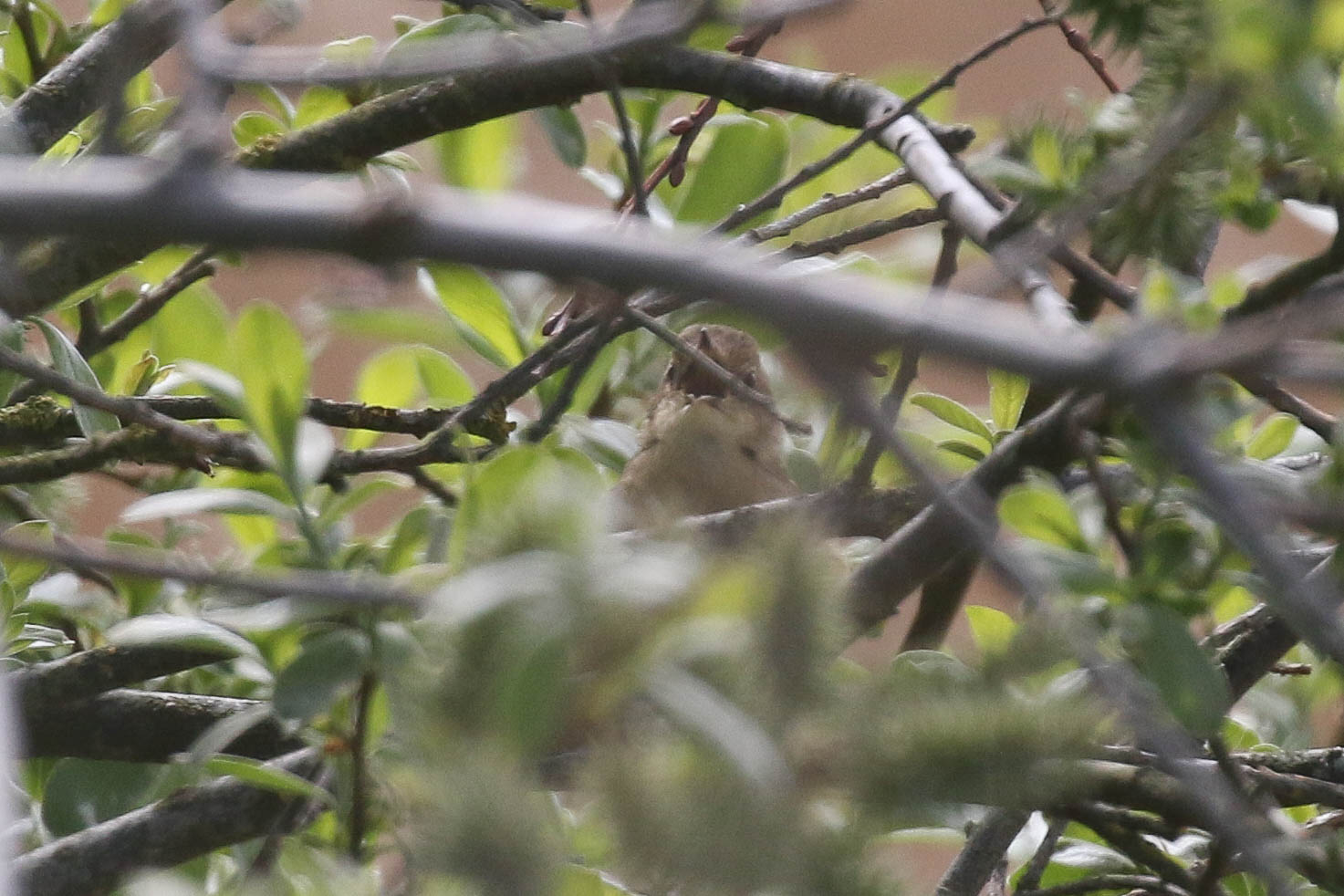
We heard one or two Bearded Tits calling from the reedbed, but they were fairly quiet today and remained stubbornly out of view. A Marsh Harrier appeared briefly over the back and a Great White Egret flew over the path and out towards Thornham. A Cuckoo was singing distantly in the bushes.
There were lots of Avocets on the Freshmarsh with many on nests on the new islands now. A couple of Little Ringed Plovers were feeding along the water’s edge, one either side of the new bund. A single Black-tailed Godwit was wading in the deeper water further up. A single drake Wigeon was an addition to the day’s list, a still lingering winter visitor.
There were plenty of Black-headed Gulls but the only Mediterranean Gull we could find today was an immature (2nd calendar year) bird dozing on the bank. We did have good views of a Sandwich Tern which flew in overhead calling and landed on one of the islands. Through the scope we could see its shaggy crest and the yellow-tip to its black bill.
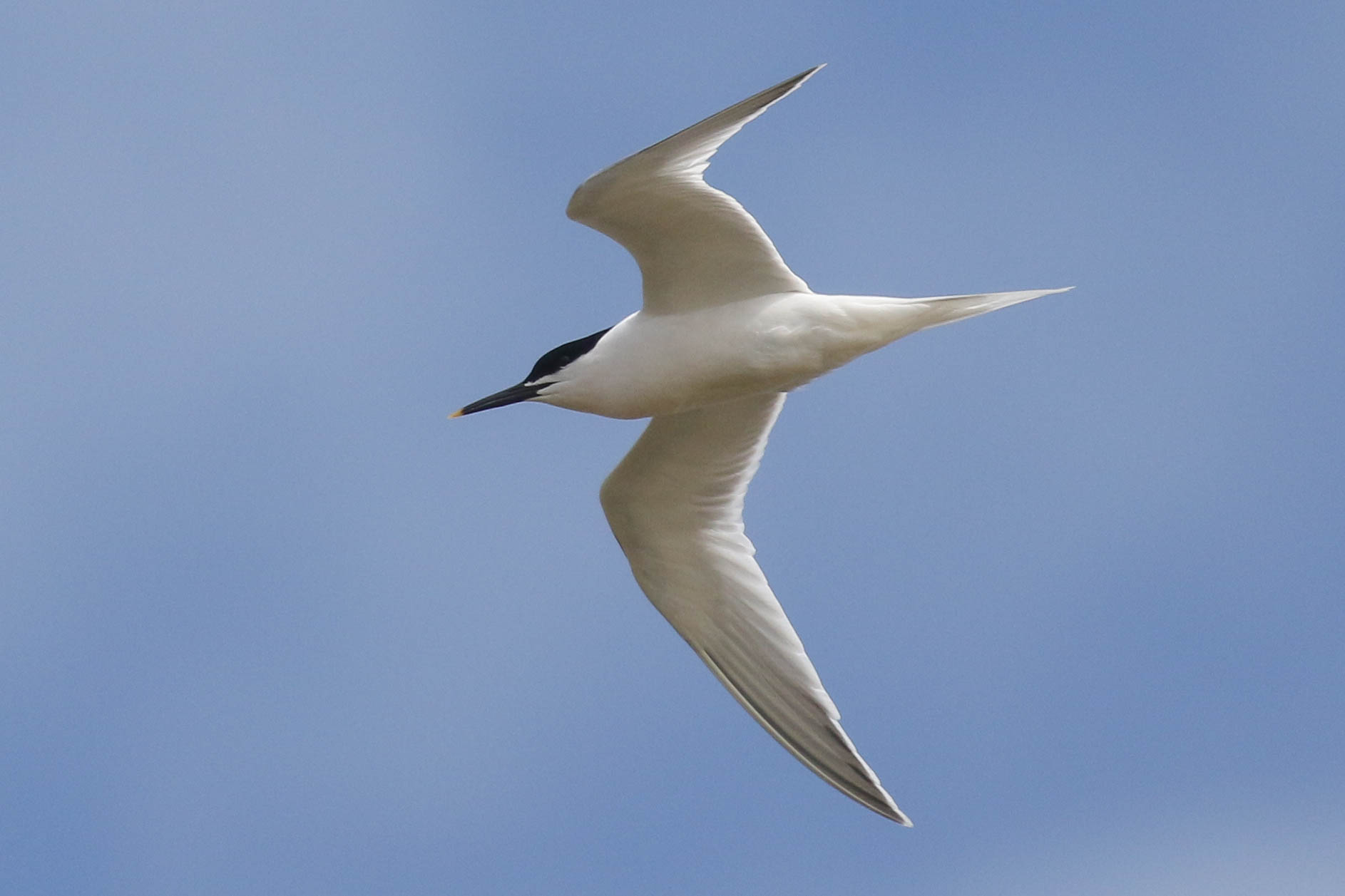
We walked straight on and out towards the beach. A nice close Curlew was probing in the muddy banks in the bottom of the channel on Volunteer Marsh. There were a few Brent Geese still on the saltmarsh opposite the Tidal Pools. A couple of Grey Plover flew off from the pools towards the beach calling and a Spoonbill flew over heading east.
The tide was out now. There were a few Oystercatchers on the mussel beds but most of the waders were out on the sand distantly up towards Thornham Point. There had apparently been a few Little Terns offshore earlier, but we couldn’t see any now, just some distant Sandwich Terns. A large flock of Common Scoter flew across way out in the haze, towards the wind turbines.
We called in briefly to scan the back of the Freshmarsh from the terrace above Parrinder Hide. There was a single Ruff close in front of the hide, but nothing else we hadn’t seen already, so we decided to head back. On our way back, there seemed to be more hirundines over the reedbed now, lots of Swallows and at least three House Martins. Another Swift was hawking back and forth with them, our second of the day (like buses!).
Jack Snipe had been mentioned as something we might have a look for today, so we thought we might try somewhere nearby to round off the day. There have been a couple still along the coast the last few days, including one at Thornham, but that had only been seen on one day and hadn’t been reported since. Still, we figured there had been lots of other waders there recently, so it was worth a look anyway.
As we walked up onto the seawall at Thornham Harbour, we spotted a small group of Whimbrel on the grazing marshes nearby, so we stopped and got them in the scope. A Wheatear flew up and landed on a post by the path, before flying over to the old sluice where it joined a second Wheatear, both males and both quite richly coloured birds, so presumably heading further north.
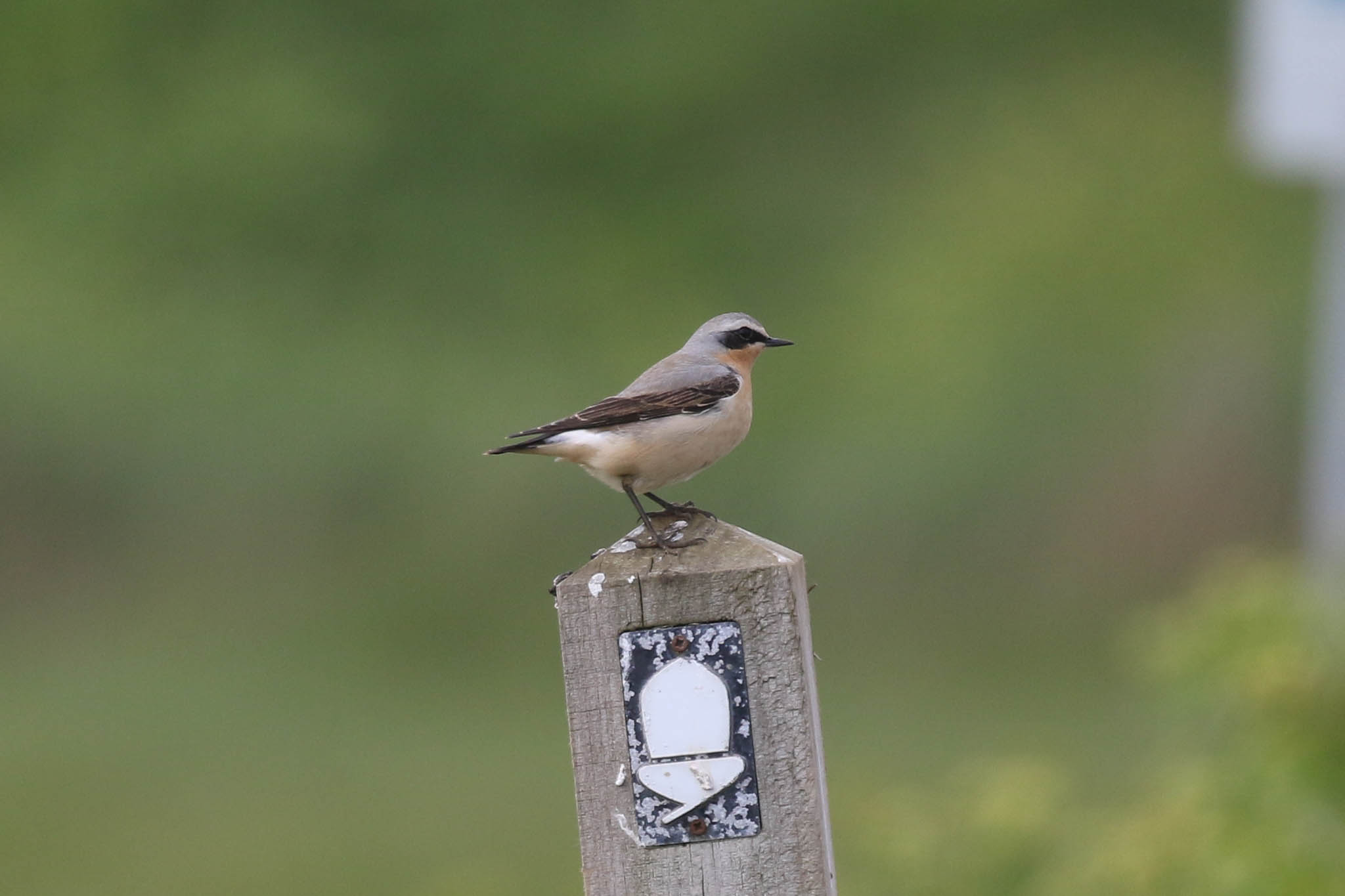
We walked on up to the flash in the next field. We had a quick look in the harbour on our way – there were several Grey Plover, mostly in stunning breeding plumage now, and another rusty Bar-tailed Godwit. Another Whimbrel flew up from the saltmarsh calling as we walked on.
There were at least seven Ruff on the flash today, in a variety of colours no two alike. One in particular was starting to get its ornate ruff, with shaggy feathers on the front of its neck. The testosterone was rising and they were getting very aggressive, chasing after each other constantly. They will soon be off to Scandinavia to lek, but it was great to watch their antics here.
Three Little Ringed Plovers were on the muddy edges and they were chasing each other round too. A single Ringed Plover dropped in with a smart breeding plumage Dunlin, rich brown edged above and sporting a crisp black belly patch.
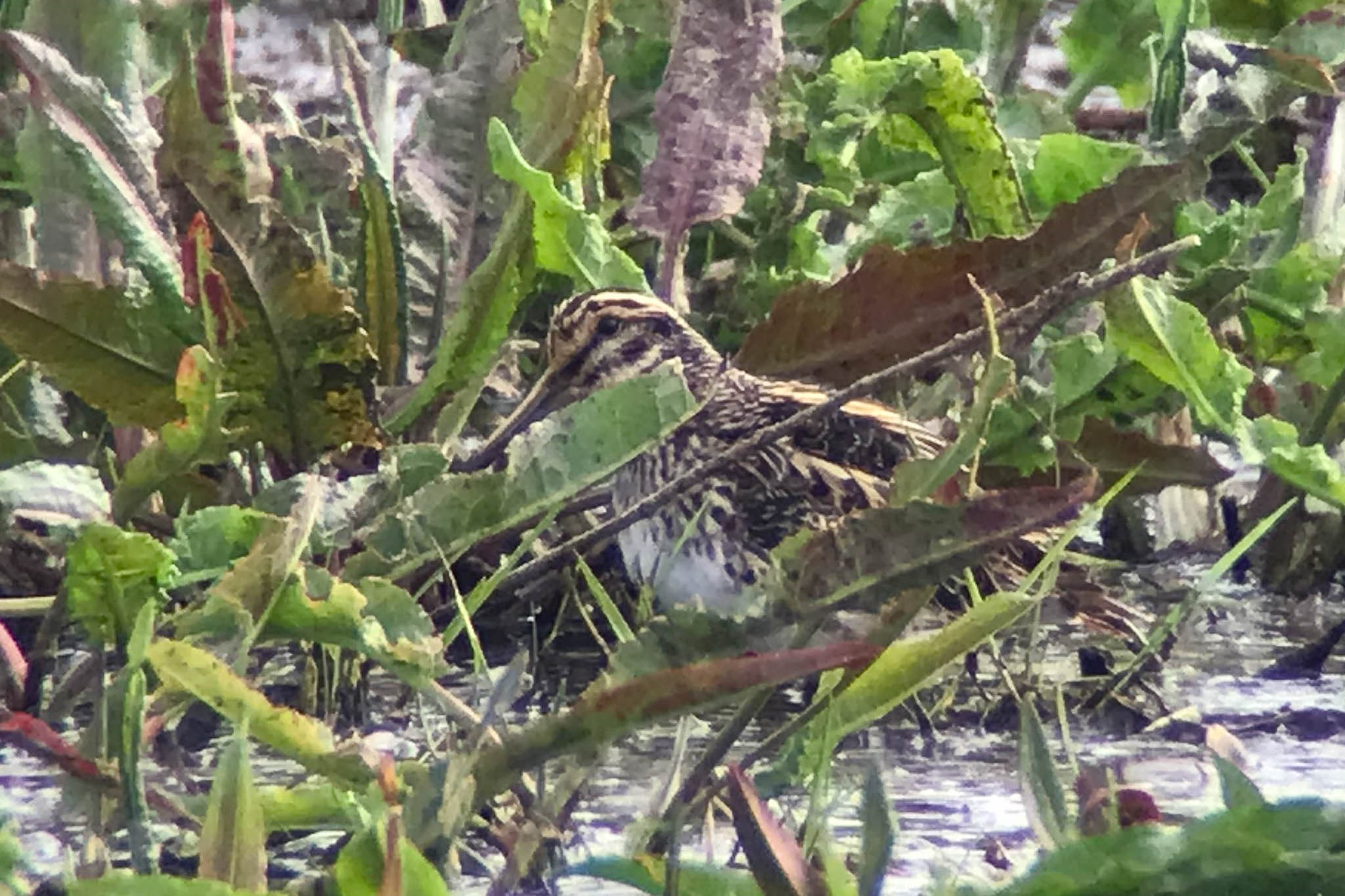
We had seen a Common Snipe as we were walking out, but there was no sign of it now. We didn’t hold out much hope of the Jack Snipe still being here but as we scanned around the margins of the pool suddenly there it was, half-hidden in the emerging docks, preening. We turned the scope on it and watched it, stopping preening and bobbing briefly a couple of times. Then it started to feed and stalked away into the vegetation. It was our lucky day! We then found the Common Snipe again, asleep behind a clump of rushes on the grass at the back.
That was a great way to end the day, so we set off back well satisfied after a very fruitful day’s birding.
















